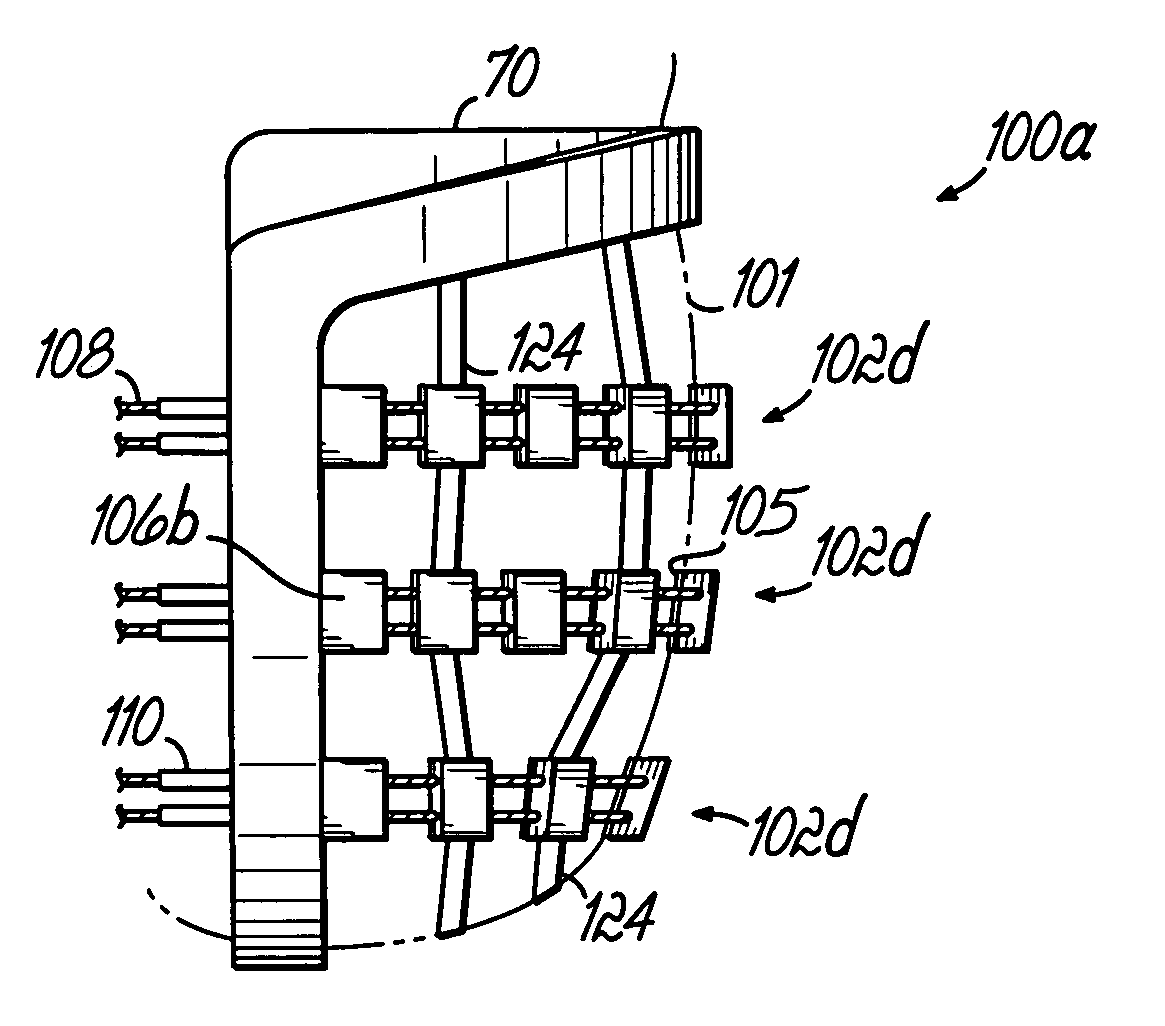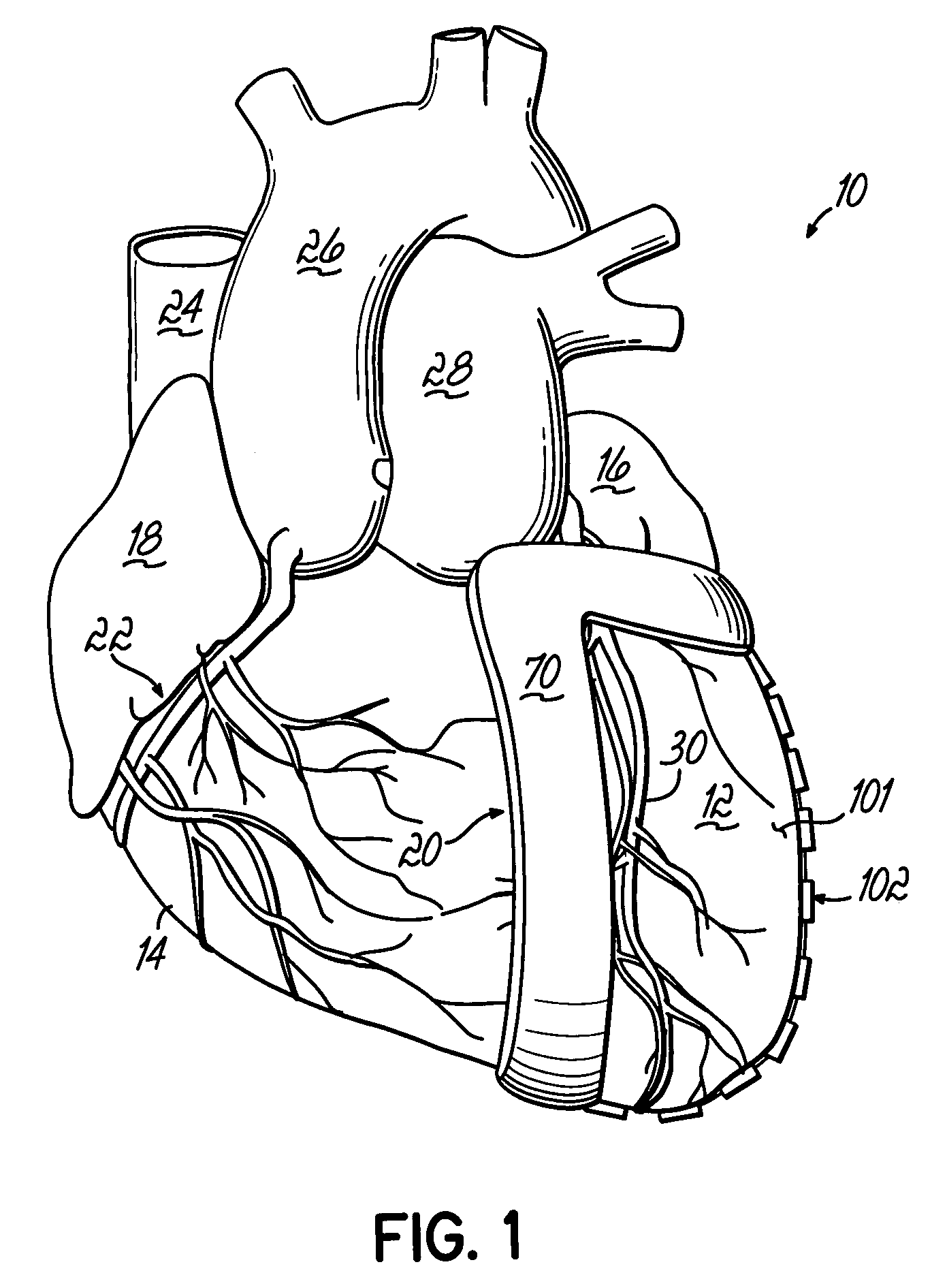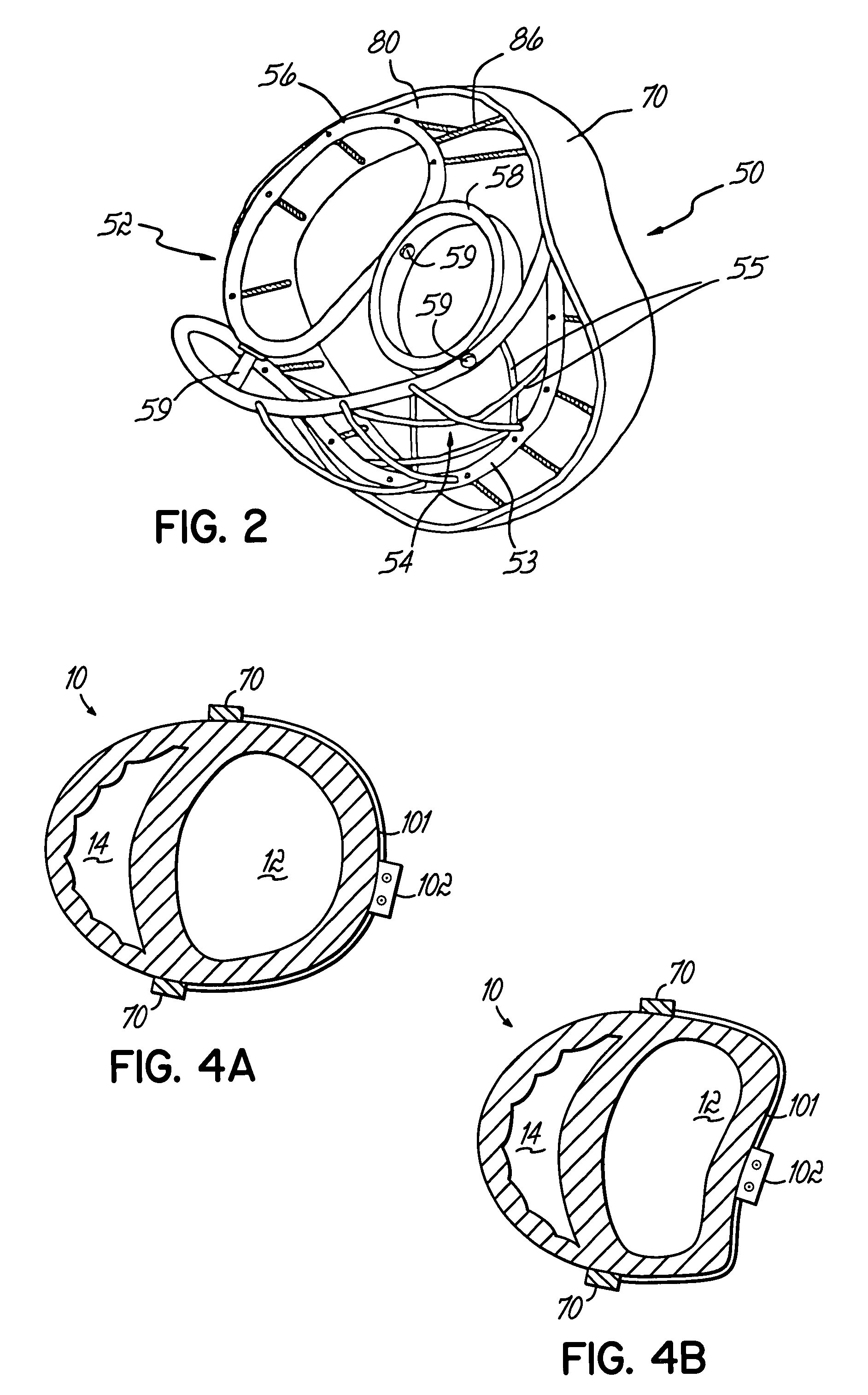Heart wall actuation device for the natural heart
- Summary
- Abstract
- Description
- Claims
- Application Information
AI Technical Summary
Benefits of technology
Problems solved by technology
Method used
Image
Examples
Embodiment Construction
[0040]The present invention may best be described in the context of the natural human heart, and accordingly, the heart structure is discussed briefly below. Furthermore, the actuator system of the invention, in one embodiment, is coupled to a framework which cooperates with the human heart. One suitable framework for practicing the invention is disclosed in U.S. Pat. No. 5,957,977, to which priority is claimed, and which is incorporated herein by reference. Other frameworks may also be suitable. A brief overview of the framework of U.S. Pat. No. 5,957,977 is also set forth herein.
[0041]Referring now to FIG. 1, a natural human heart 10 is shown in perspective with a portion of the framework of the actuation system, and has a lower portion comprising two chambers, namely a left ventricle 12 and a right ventricle 14, which function primarily to supply the main pumping forces that propel blood through the circulatory system, including the pulmonary system (lungs) and the rest of the bo...
PUM
 Login to View More
Login to View More Abstract
Description
Claims
Application Information
 Login to View More
Login to View More - R&D
- Intellectual Property
- Life Sciences
- Materials
- Tech Scout
- Unparalleled Data Quality
- Higher Quality Content
- 60% Fewer Hallucinations
Browse by: Latest US Patents, China's latest patents, Technical Efficacy Thesaurus, Application Domain, Technology Topic, Popular Technical Reports.
© 2025 PatSnap. All rights reserved.Legal|Privacy policy|Modern Slavery Act Transparency Statement|Sitemap|About US| Contact US: help@patsnap.com



